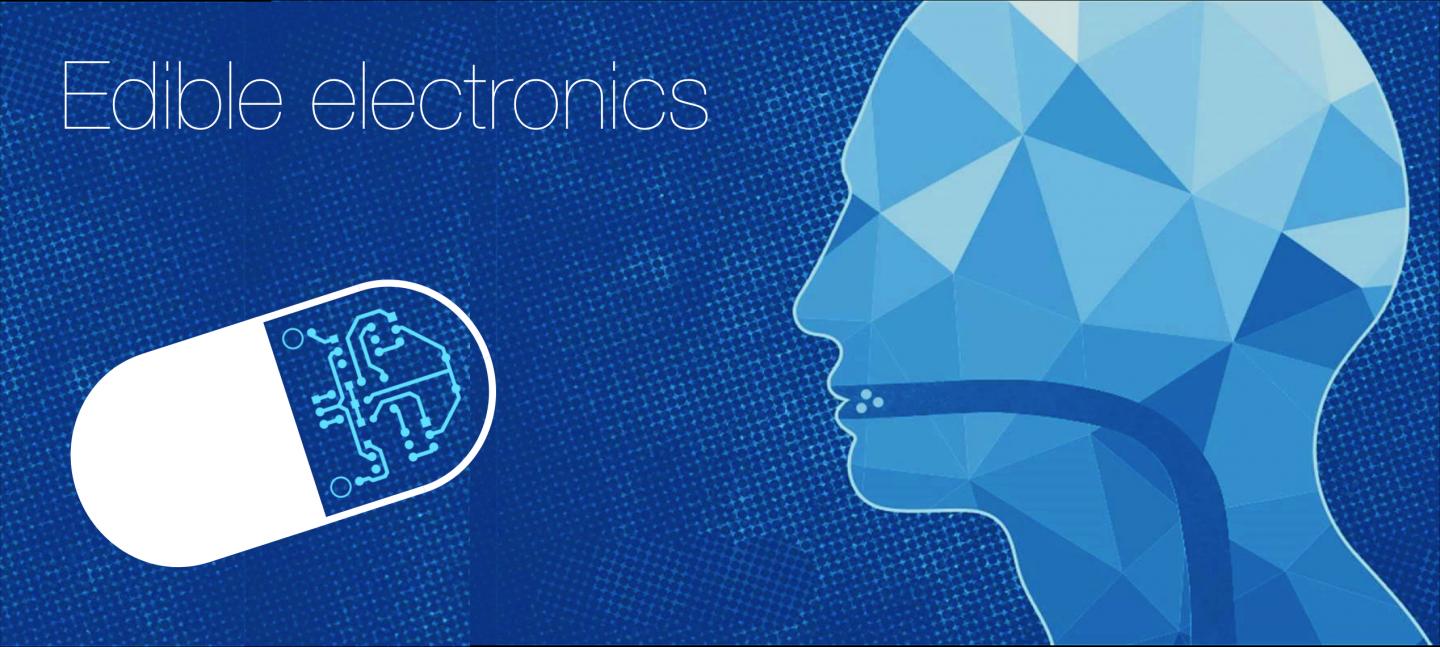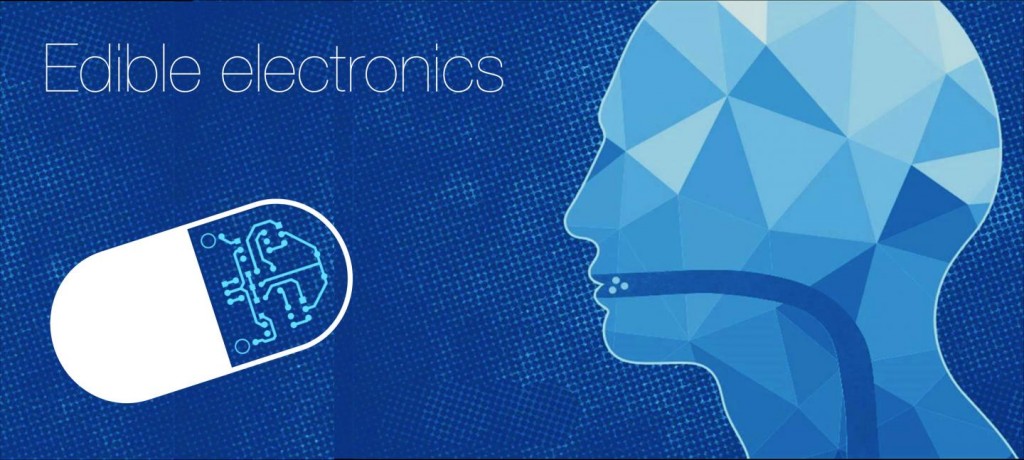Future Pills Will Be Electronic

In his recent review published in the journal Trends in Biotechnology, Chistopher Bettinger makes a summary of the current state and future trends of edible electronics: medical devices that do not need to be implanted, just swallowed. The concept ranges from miniaturized cameras to inspect the gastrointestinal tract to pills that release a specific drug according to environmental changes. Novel materials and fabrication strategies will boost the use of these electronics.
Technology already creates devices that continuously monitor our body. But while today many people depend on implanted electronics, the trends move towards wearable and ingestible electronics. This does not mean that implants will dissappear: miniaturization and novel materials will make this option less invasive and traumatic. However, semi-invasive alternatives like electronic contact lenses or pills are getting a lot of attention because of their great potential.
Ingestible electronics
Ingestible electronics have already been used to monitor gastrointestinal pH, body temperature or oxygen tension. Current strategies in microelectronics fabrication are reducing the size of the devices, facilitating their movement. Proteus Digital Health created Discover by Proteus, an edible, non-toxic, silicon-based microelectronic device that communicates with an external receiver and informs about the patient drug intake: a signal is sent when an electrochemical cell bound to the pill contacts with gastric fluid. Communication frequencies can be adjusted so as not to obstruct physiological mechanisms.
Wireless capsule endoscopy is an alternative to traditional endoscopy, and better suited to visualize the upper gastrointestinal tract. The impermeable polymer capsule contains a camera, a LED array, a data processor, a transmitter and a power source.
IntelliCap by Phillips is an edible device that controls release of factors depending on the environment. It includes a pH sensor, a drug receptacle, a release pump and the electronics necessary for communication. IntelliCap is mostly used in drug discovery to measure pharmacokinetics.
Other devices spot bacteria in food or teeth with optical sensors that detect changes in light reflection or radiofrequency sensors that detect changes in impedance.

(A) pH and pO2 measurements by edible electronic pills in the GI tract; (B) Discover by Proteus; (C) Pillcam; (D) IntelliCap. CREDIT: Trends in Biotechnology.
Current and future materials for edible devices
Current polymers used to encapsulate the edible devices are rigid and make the devices size similar to that of the superior gastrointestinal tract diameter. The incidence of retention is between 1.4% and 2.5%, depending on the patient´s condition. Retention poses a high risk of lumen perforation. These problems make non-degradable capsules unsuitable for repetitive treatments. Current trends focus on finding new materials that are biodegradable and flexible but resistant enough to carry out their tasks inside the body. This would specially benefit molecular biosensing and delivery.
Some materials can be borrowed from necessary, dietary elements, and thus serve a dual purpose. Minerals, for example, can be used as battery electrodes or other components. Synthetic polymers used as food additives can be used to constitute some device parts like coatings, substrates or layers. Biomolecules and biopolymers can be part of electronic elements.
Energy storage in edible materials
Materials should provide electrochemical energy storage without toxic or immunogenic risk. Melanin, minerals and active carbon could work as battery electrodes, and gastric fluid could be used as an electrolyte.
Biodegradable materials for edible electronics
Soluble and/or biodegradable polymers -both synthetic and natural – could be used as starting materials to build complex elements. Organic semiconductors based on small molecules can form biodegradable transistors. When tested in vitro, they degraded after 2 months in artificial body fluid.
Silicon is the most common material in microelectronics fabrication. Silicic acid has nutritional properties, and silicon can be easily digested when laid as ultra-thin layers, as tested in integrated circuits. Organic semiconductors have also been used, although they present lower stability and worse performance than silicon-based microelectronic devices.
Potential applications of edible electronics
Many biomarkers found in the gastrointestinal system are potential targets for modulation and/or detection via ingestible microelectronic devices. These devices can detect gut infections earlier and more accurately than traditional systems, preventing epidemics. Imbalance of internal microbiota composition informs about the existence of a pathology. The microbiome could be analyzed by edible electronics more reliably than with current fecal genetic tests.
A very promising application of edible microdevices is controlled drug release. Sensors would analyze physiological conditions and the rate of drug absorption. Based on that information, drugs could be released from several reservoirs.
In conclusion, edible electronics are a paradigm of the intersection between electronic technology and biological science, in a joint effort to detect and treat disease in a timely manner. The field is relatively new, and many materials are being found to design non-toxic, biodegradable components. Ingestible electronics will increasingly benefit from wearable electronics and soft robotics, broadening its applicability and potential.
Source: EurekAlert!

